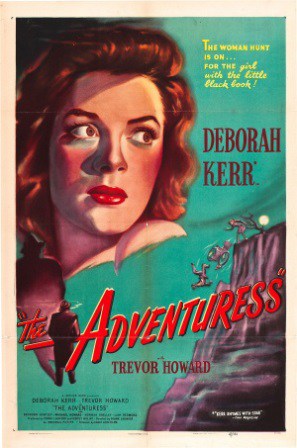Some could say that 1946’s I See a Dark Stranger (released in the US as The Adventuress) is a gem in the rough. And perhaps in some ways they’d be right, especially if they’re talking about the earlier portions of the film.
Gluing the experience together is Deborah Kerr starring as Bridie Quilty, a passionate Irishwoman with an equally large dose of naiveté. She grows up fascinated with her father’s stories of the Irish Revolution and upon turning 21 heads to Dublin to join the Irish Republican Army. Only after meeting one of her father’s supposed colleagues is she dissuaded from the idea.
Disheartened slightly, Bridie gets a job working in a nearby hotel and bar, where she again encounters Miller, with whom she’d shared her train compartment with earlier. She softens towards him when she realizes that he in fact isn’t English at all but rather a German spy and he soon recruits her to help in freeing Pryce, another spy (David Ward), out of prison.
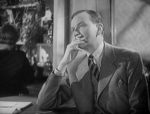 Almost simultaneously David Baynes (Trevor Howard), an English officer, shows up as well. Alarmed, Miller has Bridie distract David while he springs Pryce. Unfortunately Miller is fatally wounded in the escape (Pryce is killed outright), but manages to get back to Bridie’s room as he’s learned key information from Pryce which must be passed along.
Almost simultaneously David Baynes (Trevor Howard), an English officer, shows up as well. Alarmed, Miller has Bridie distract David while he springs Pryce. Unfortunately Miller is fatally wounded in the escape (Pryce is killed outright), but manages to get back to Bridie’s room as he’s learned key information from Pryce which must be passed along.
Pryce’s information is contained in a journal hidden in a church on the Isle of Man. Unknowingly followed now by both David and another German spy, Bridie retrieves it and learns that it contains the location of the D-Day landings. With a rare moment of lucidity- realizing that passing the information to the Germans would kill thousands- including many of her beloved Irish countrymen- she burns the book.
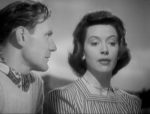 She’s finally confronted by Baynes who confesses his love for her and in response she tells him what she’s done. She plans to turn herself in (to prevent Baynes from having to do so). However, on the way she’s captured by the Germans, who also soon after capture Baynes who was following a short time after.
She’s finally confronted by Baynes who confesses his love for her and in response she tells him what she’s done. She plans to turn herself in (to prevent Baynes from having to do so). However, on the way she’s captured by the Germans, who also soon after capture Baynes who was following a short time after.
The Germans take them to Ireland and hide in a funeral procession to evade the chasing police. However at the border it’s discovered that the procession is really a front for an alarm clock smuggling operation. Comedy ensues and the group escapes to a nearby pub and hotel. They now learn on the radio that D-Day has begun, rendering Bridie’s information useless. A final fight upstairs ensues which borders on the ludicrous as Bayne takes on the two German spies.
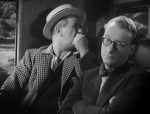 Ultimately everyone is arrested and after the war Bayne and Bridie wed.
Ultimately everyone is arrested and after the war Bayne and Bridie wed.
There’s a lot to like here, both the obvious and not so obvious. The espionage elements are outstanding and show the benefits of Sidney Gilliat and Frank Launder’s writing (who also penned The Lady Vanishes). There’s a few bits of humor scattered throughout but the two farcical sequences towards the end (the alarm clocks and the final fight) nearly derail what’s been a good ride so far.
Shot with heavy use of location shooting, I See a Dark Stranger shows a lot of attention being paid to lesser things as well. The interiors are small and crowded and usually lit in a way to display the lurking potential for sinister deeds. Complementing the proceedings as well is a strong score from William Alwyn. The score’s almost too good as it moves from moody and atmospheric in the earlier portions to a carnivalistic bacchanal during the ending comedic sequences- highlighting further how out of place these truly are.
On a deeper note the film conveys a message on stereotypes. We move during the picture from Bridie being so blindly ‘Irish’ as to summarily dismissing Miller initially when she feels he’s English to her actually marrying one. Several times we learn that there are always two sides to every story and that stereotyping comes at one’s peril.
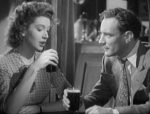 Both Deborah Kerr and Trevor Howard are a joy to see here, both early in their careers. Howard is as perfectly stodgy and reserved as Kerr is naïve and gullible. Already on the fast track to stardom, got her first New York Film Critics Circle Award for Best Actress for her role here, followed in 1947 with the same award for her role in Black Narcissus.
Both Deborah Kerr and Trevor Howard are a joy to see here, both early in their careers. Howard is as perfectly stodgy and reserved as Kerr is naïve and gullible. Already on the fast track to stardom, got her first New York Film Critics Circle Award for Best Actress for her role here, followed in 1947 with the same award for her role in Black Narcissus.
If there are flaws in I See a Dark Stranger, it’s in the comedic sequences and the love story, both of which struggle in their own way. As there’s no need to revisit the Keystone Cops feel of the comedy, let’s look at the romantic story.
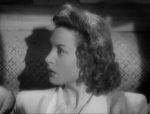 It’s hard to feel any romance here at all and this plotline simply has a hard time working. Here Kerr’s character seems so distant and perhaps so naïve to be perhaps unaware or at least emotionally unavailable from Trevor Howard’s charms. Howard plays it straight but any rational man would likely have gone his own way, especially after their date while Miller is springing Pryce. She’s so hard to get and so confusing in her conversation that at one point Bayne even questions what in the world is wrong with her. Yet somehow he falls for her.
It’s hard to feel any romance here at all and this plotline simply has a hard time working. Here Kerr’s character seems so distant and perhaps so naïve to be perhaps unaware or at least emotionally unavailable from Trevor Howard’s charms. Howard plays it straight but any rational man would likely have gone his own way, especially after their date while Miller is springing Pryce. She’s so hard to get and so confusing in her conversation that at one point Bayne even questions what in the world is wrong with her. Yet somehow he falls for her.
I See a Dark Stranger still manages to overcome these hurdles, though with some serious scarring to remind us of the damage. Avoid the American release version, which runs about 14 minutes shorter. Presumably the feeling was that American audiences would be put off a bit by the accents, which perhaps they were for though the reviews on release were generally good, the film did only moderate box office.
